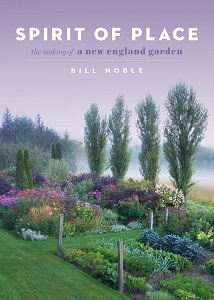
Why did the Miller Library add a new book about a private garden in Vermont? Partly because the author and garden creator, Bill Noble, has several connections to the Pacific Northwest. However, I primarily recommend this book as an engaging memoir.
“Spirit of Place: The Making of a New England Garden” is Noble’s almost 30-year story of the property he and his partner, James Tatum, own in the Connecticut River Valley. This was not a new garden; the previous owners had formed its design for 60 years.
The challenge that the author faced was retaining the garden’s historical character while shaping his own vision. “Much of what gardening is about is the feeling of being connected to a place, fostering a sense of belonging, and becoming familiar with the natural rhythms and cycles of a particular piece of the earth.”
Many famous gardens and their designers in North America and Europe influenced the author, including the artists of the nearby Cornish Art Colony. However, his long-time role as director of preservation for the Garden Conservancy had the biggest impact. This included his work with the Chase Garden in Orting, Washington.
He credits Ione Chase with helping him to understand the value of designing a garden to incorporate its view: Mount Rainier in her case, the foothills of the White Mountains of New Hampshire in his garden. She also taught him the value of using familiar or common plants “to created refined garden beauty.”
Plants in Noble’s garden include a blue willow
(Salix irrorata) he discovered in the Witt Winter Garden at the Washington Park Arboretum, and
Berberis ×
ottawensis ‘Royal Cloak’ found at the Bellevue Botanical Garden. Three plants of the latter came home in his carry-on luggage and are now “part of the garden’s backbone.” Heronswood and Forestfarm (Williams, Oregon) Nurseries were important sources for other plants.
Vermont has long and cold (USDA zone 4b) winters with snow often lasting well into April. While Seattle is much milder, this is the perfect book to read for inspiration while staying out of the grey and gloom of our winter!